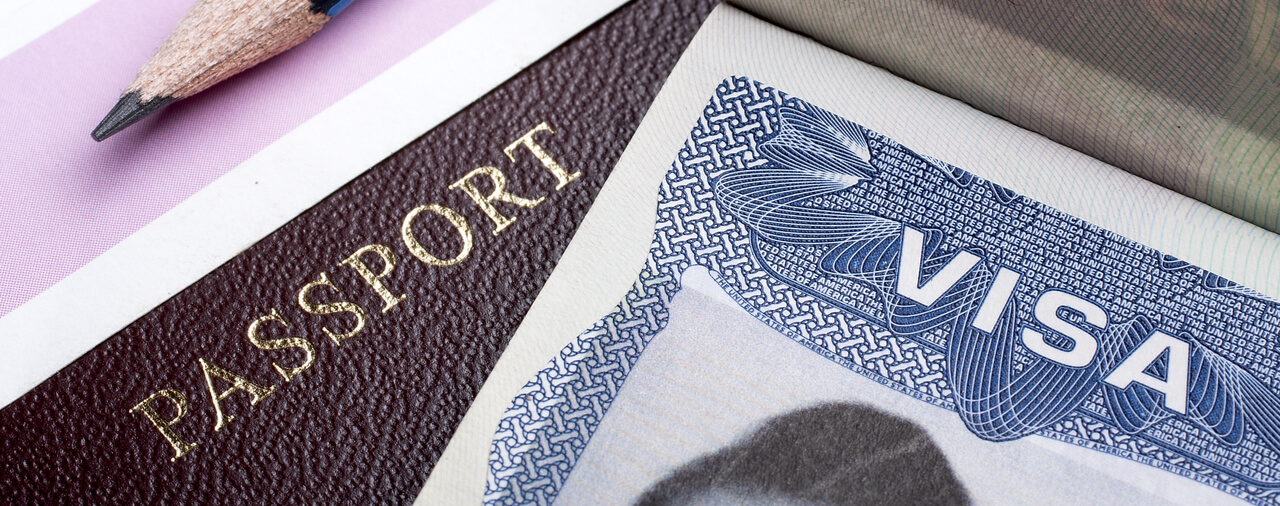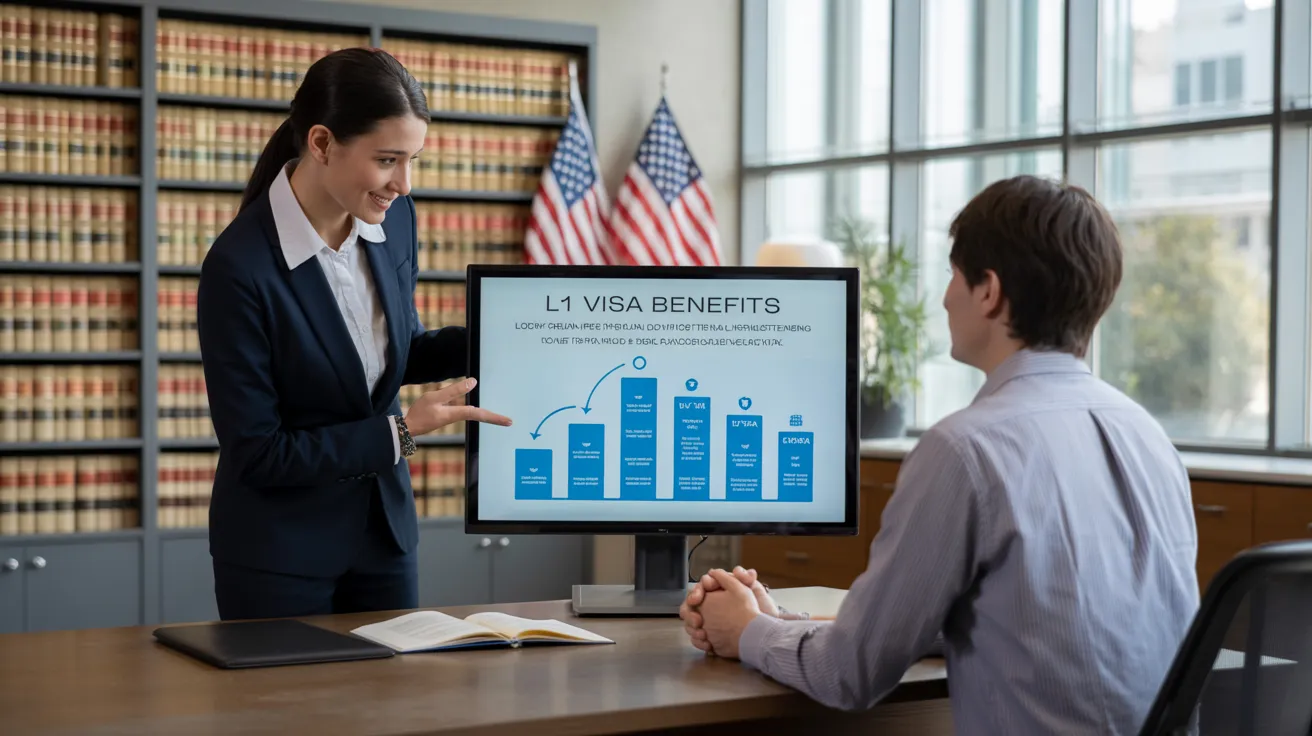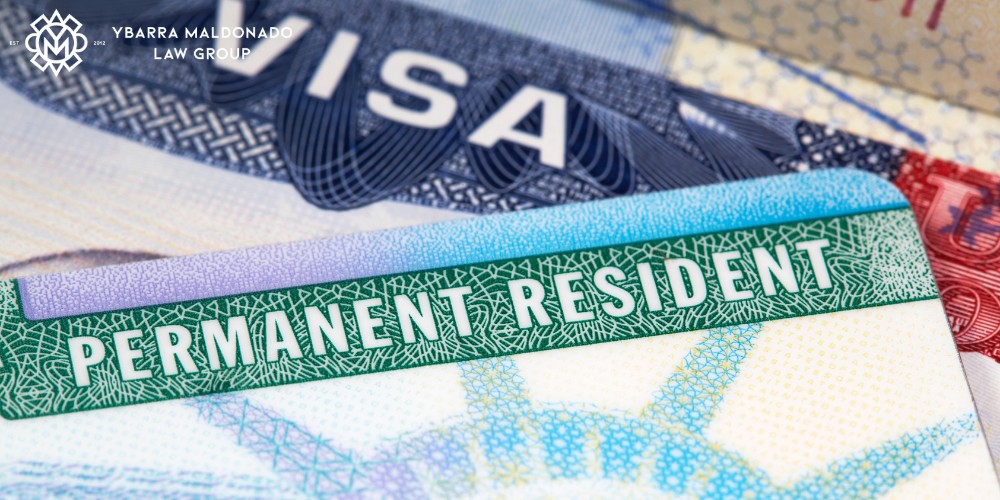Opening Opportunities: A Comprehensive Overview to the L1 Visa Process
The L1 visa procedure presents an essential path for multinational business looking for to transfer vital staff members across borders. Understanding the subtleties of qualification standards, the distinctions between L-1A and L-1B visas, and the intricacies of the application procedure can substantially affect an applicant's success. Steering this facility landscape is not without its difficulties, and mindful attention to documents and employer sponsorship is vital. As we explore the vital parts of this process, the techniques for getting rid of prospective challenges will certainly become evident, disclosing how notified preparation can open up a globe of opportunities.
Recognizing the L1 Visa
Comprehending the L1 visa involves acknowledging its importance as an essential device for multinational business seeking to move skilled employees in between international workplaces. This non-immigrant visa group facilitates the activity of execs, supervisors, and specialized knowledge workers to the United States, therefore enabling companies to preserve functional connection and harness worldwide ability efficiently. The L1 visa is divided into 2 primary classifications: L-1A for managers and execs, and L-1B for workers having specialized knowledge.The L1 visa offers an important function in boosting a company's affordable edge in the worldwide industry - L1 Visa Requirements. By enabling business to transfer their vital employees, companies can guarantee that important jobs are handled by qualified people who are already familiar with the firm's society and functional processes. This inner transfer mechanism not just cultivates understanding sharing yet likewise advertises technology and collaboration across borders.Moreover, the L1 visa is usually favored for its relatively uncomplicated application process compared to other visa categories, as it enables double intent, permitting owners to pursue permanent residency while on a short-lived copyright. This attribute makes the L1 visa particularly appealing for both companies and staff members, as it enhances the path for knowledgeable experts to establish long-term residency in the United States
Eligibility Standards
Qualification for the L1 visa depends upon a number of vital standards that guarantee both the employee and the employer meet details qualifications. This non-immigrant visa is created for international companies to move employees from foreign offices to U.S. counterparts.Firstly, the company must be a certifying company, that includes a moms and dad company, branch, associate, or subsidiary of a united state company. The business needs to have been doing company for at least one year both in the united state and abroad. This guarantees that the business has enough operational security and a genuine presence.Secondly, the staff member has to hold a supervisory, executive, or specialized expertise position. For L1A visas, the candidate has to demonstrate supervisory or executive certifications, while L1B visas concentrate on specialized expertise pertaining to the company's products, solutions, or processes. In addition, the staff member has to have functioned for the foreign entity for at the very least one constant year within the last 3 years prior to their application.Lastly, the employee's duty in the U.S. should straighten with their previous setting, guaranteeing that their abilities and experience are leveraged for the company's benefit.
Kinds of L1 Visas
The L1 visa group consists of 2 primary kinds developed to help with the transfer of employees within international companies: the L1A visa for supervisors and executives, and the L1B visa for employees with specialized expertise. Each type serves distinct objectives and has specific eligibility criteria.The L1A visa is customized for individuals who hold managerial or executive placements within a company. This visa enables high-level staff members to transfer to a united state branch, subsidiary, or affiliate of the same organization. Candidates for the L1A visa should show that they have actually been used in a managerial or executive capacity for at the very least one continual year within the previous three years prior to their application. Furthermore, this visa offers a longer duration of keep, at first granted for 3 years, with the possibility of extensions for approximately 7 years.In comparison, the L1B visa is meant for specialists with specialized expertise pertaining to the business's products, solutions, or procedures. To certify, applicants need to show that their expertise is critical to the company which they have actually functioned for at the very least one continual year within the last 3 years in a function that required this specialized expertise. The L1B visa is at first approved for three years, with extensions readily available for as much as five years.Both visa types are essential for companies seeking to enhance their worldwide procedures by leveraging skilled workers, thereby promoting advancement and efficiency within the united state market.
Application Process
Steering with the L1 copyright process includes numerous important actions that have to be meticulously followed to guarantee an effective result. The process begins with the U.S. company, who have to initially develop eligibility by showing a qualifying partnership with the foreign entity and verifying that the employee satisfies the particular needs for the L1 visa group being sought.Once eligibility is verified, the company initiates the procedure by filing Form I-129, the Request for a Nonimmigrant Worker, with the U.S. Citizenship and Migration Provider (USCIS) This kind should be gone along with by a thorough description of the work tasks to be carried out, the organizational structure of both the united state and international entities, and the staff member's certifications. It's vital to validate that all information is exact and complete, as omissions or errors can result in hold-ups or denials.Upon authorization of the I-129 petition, the following step includes the worker requesting the L1 visa at a united state embassy or consular office in their home nation. This phase needs the conclusion of Kind DS-160, the Online Nonimmigrant copyright, and setting up an interview. Throughout the interview, the candidate has to offer proof sustaining their credentials and the company's petition.After the visa is granted, the worker can go into the United States to work in the marked function. In general, mindful preparation and adherence to each action of the application procedure are important for a successful L1 visa end result.
Required Documents

Important Types Needed
Navigating the L1 Visa process requires careful focus to the essential types and L1 Visa guide documents needed for a successful application. The main form needed is the Form I-129, Request for a Nonimmigrant Worker, which must be completed and submitted by the united state employer. This type describes the details of the employment deal and the qualifications of the worker looking for the L1 Visa.Alongside Form I-129, the applicant will require to full Type I-539 if accompanying relative are likewise requesting visas. Furthermore, the company needs to give evidence of the certifying relationship in between the united state entity and the international entity, frequently requiring the entry of corporate documents such as write-ups of unification or economic statements.Moreover, it is crucial to include the L Classification Supplement to Form I-129, which specifies the type of L Visa being asked for-- either L-1A for managers and execs or L-1B for workers with specialized understanding. Applicants ought to guarantee that all kinds are authorized and dated properly, as incomplete submissions can lead to delays or denials. Appropriately setting up these vital kinds lays the foundation for a smoother L1 copyright process.

Supporting Evidence Needs
Supporting documentation is crucial for a successful L1 copyright, as it corroborates the claims made in the request. Candidates must offer a series of papers to show eligibility for the visa, which is classified right into two primary types: evidence of the qualifying partnership in between the U.S. and international entities and proof of the applicant's qualifications.To establish the relationship, candidates should submit paperwork such as company business graphes, financial declarations, and proof of ownership. These documents verify that the foreign company has a qualifying relationship with the U.S. employer, whether as a parent business, subsidiary, branch, or affiliate.For the applicant's certifications, important papers consist of a thorough work letter from the foreign company, outlining the applicant's job title, responsibilities, and period of employment. Additionally, academic qualifications, such as degrees and diplomas, must be provided to prove the candidate's expertise in the relevant area.
Employer Sponsorship Documents

Typical Obstacles
Steering the L1 visa process presents a number of usual obstacles that applicants should know. Trick issues commonly include strict documentation needs, prospective delays in handling times, and the requirement for rigorous legal compliance. Comprehending these barriers can aid applicants much better prepare and reduce risks during their copyright journey.
Documents Demands
The L1 copyright process frequently provides considerable obstacles associated to paperwork needs. Candidates should give extensive documents to develop qualification, which can bring about complication and possible delays. Trick records consist of evidence of a certifying relationship in between the united state and foreign employer, evidence of the candidate's employment history, and thorough information regarding the task function in the U.S.One typical challenge is gathering enough evidence to show the nature of the qualifying connection. Companies commonly battle to present clear organizational graphes or monetary declarations that illustrate the link between the entities. In addition, guaranteeing that letters of assistance from employers precisely mirror the applicant's work obligations and certifications is vital, as obscure summaries can result in denials.Another issue arises from the need for thorough work summaries that line up with the L1 visa categories. Applicants should articulate not just their existing duty however likewise their managerial or customized understanding obligations clearly. This demands a detailed understanding of both the applicant's position and the governing language used in L1 applications.
Processing Dead Time
Experiencing delays in handling times is an usual obstacle faced by L1 visa candidates, typically causing stress and unpredictability. A number of elements add to these hold-ups, consisting of high application volumes, increased examination of applications, and management stockpiles within the united state Citizenship and Immigration Provider (USCIS) Applicants might find that processing times can differ greatly relying on the solution facility handling their application, as each facility has its own work and effectiveness levels. In addition, the complexity of the candidate's situation, such as the requirement for substantial paperwork or clarification, can even more prolong wait times.In some instances, problems connected to the applicant's present migration standing or previous visa history might also lead to added delays, as USCIS might require more evaluation or info. It is essential for prospects to continue to be proactive throughout this period, maintaining open interaction with their companies and legal representatives to address any kind of potential issues promptly.Understanding these processing time difficulties can assist L1 visa candidates plan for possible hold-ups and reduce the impact on their shift and job strategies. Perseverance and persistance are essential virtues in steering this elaborate process.
Lawful Conformity Issues
Several L1 visa applicants run into lawful conformity concerns that can complicate their trip towards acquiring the visa. Recognizing and sticking to the specific regulations established by the U.S. Citizenship and Immigration Services (USCIS) is important. Common challenges include showing the certifying connection in between the foreign and united state companies, as well as confirming that the candidate has the requisite specialized understanding or managerial capacity.Additionally, candidates must give extensive paperwork detailing their work responsibilities, business structure, and economic practicality of the U.S. entity. Inadequate or inaccurate documents can result in delays or perhaps rejections. Companies have to likewise assure that they abide with labor legislations, including wage and working problem criteria, which can impact visa eligibility.Another common problem entails keeping compliance with the terms of the visa once provided. Adjustments in employment status, work obligations, or company structure can necessitate modifications to the visa, which otherwise addressed immediately can result in legal issues. Because of this, staying informed concerning conformity requirements and looking for lawful guidance when needed is necessary to browse the intricacies of the L1 visa procedure effectively.
Tips for Success
Success in the L1 copyright process typically depends upon precise preparation and attention to detail. To enhance your opportunities of authorization, start by completely comprehending the qualification needs for both the L1A and L1B visa categories. Review whether your setting at the business qualifies as supervisory, exec, or specialized expertise, as this categorization notably impacts your application.Next, collect considerable documentation that substantiates your claims. This consists of organizational charts, comprehensive work summaries, and proof of the company's operational framework. Clear and succinct proof of the certifying relationship between the united state entity and the foreign entity is important. Confirm that all papers are organized rationally and offered in a professional way, as this reflects your dedication and severity regarding the application.Engage the solutions of a skilled immigration attorney who specializes in L1 visas. Their knowledge can show vital, directing you through complicated regulations and assuring that all paperwork abides by current laws. In addition, plan for the interview by exercising response to usual concerns and preparing to discuss your duty and contributions to the firm detailed.
Frequently Asked Questions
Can Household Members Go Along With the L1 Visa Holder?
Yes, relative of L1 visa owners, consisting of spouses and single youngsters under 21, can come with the primary visa owner. They may also get L2 visas, which allow them to reside in the USA.
For How Long Can I Remain On an L1 Visa?
The L1 visa enables initial remains of approximately 3 years, with the opportunity of extension. L1A visa owners might remain for a maximum of seven years, while L1B visa holders can remain for 5 years.
Can L1 Visa Holders Obtain a Permit?
Yes, L1 visa holders can request a permit. L1 Visa. They may seek long-term residency via employment-based groups, typically needing sponsorship from their employer, offered they satisfy the needed qualifications and documentation demands
What Happens if My L1 copyright Is Rejected?
If your L1 copyright is rejected, you might receive a notification detailing the reasons for denial. You can seek to appeal the choice, reapply, or explore different visa alternatives based on your scenarios.
Exist Any Travel Restrictions With an L1 Visa?
An L1 visa typically enables global traveling; nonetheless, re-entry to the united state rests upon keeping legitimate standing. Tourists must ensure conformity with visa problems to avoid problems upon return
Final thought
